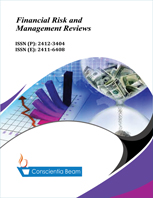Modeling and Estimation of Cumulative Abnormal Return using VECM
DOI:
https://doi.org/10.18488/journal.89.2021.71.36.49Abstract
This paper examined how firm-level idiosyncratic risk varies over time. It affected initial public offering (IPO) in the presence of pump-and-dump and flipping trends during the early trading of IPO stocks in the Indonesia Stock Exchange. The paper used the IPO data taken from 181 companies during the year 2015-2019. It revisited the relationship between Cumulative Abnormal Return thirty-days (CAR30D) and Cumulative Abnormal Return five-days (CAR5D) and the Characteristics (IPO Floating shares, IPO Fund and Price) and Macroeconomics Condition (Inflation rate). It also used the cointegration analysis and VECM model. The paper found that Both LnFloat and LnPrice had causal evidence in the long-run causality or short-run with Cumulative Abnormal Return thirty days (CAR30D). We also noted that idiosyncratic risk exposure depends on IPO characteristics. It was crucial for firms going public in hot-issue markets, undervalued IPOs, and high idiosyncratic-risk issues. The model suggested that those series should cointegrate firstly. However, the variable of LnIPOFund had causal evidence in the short-run causality only.

